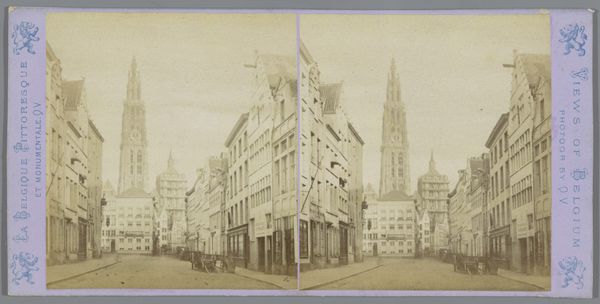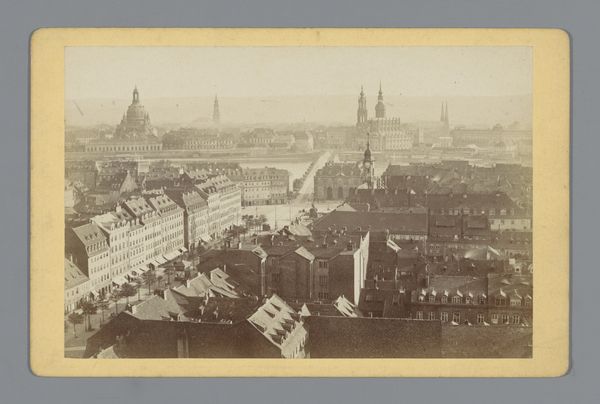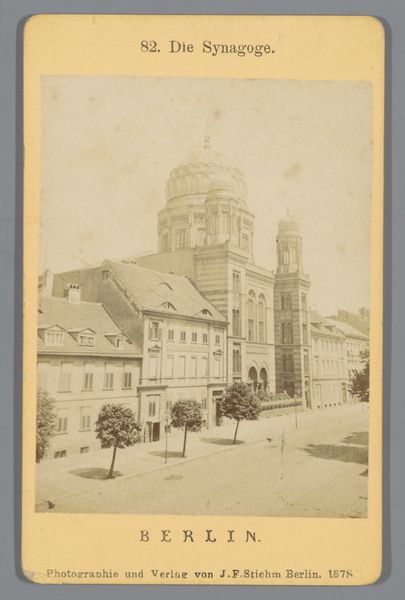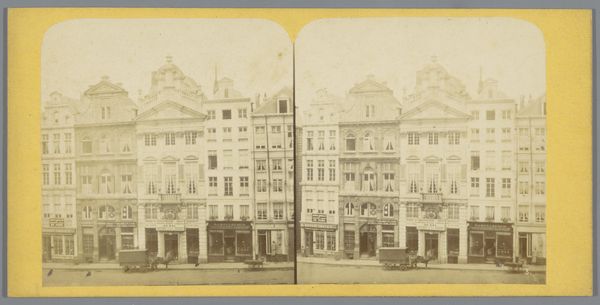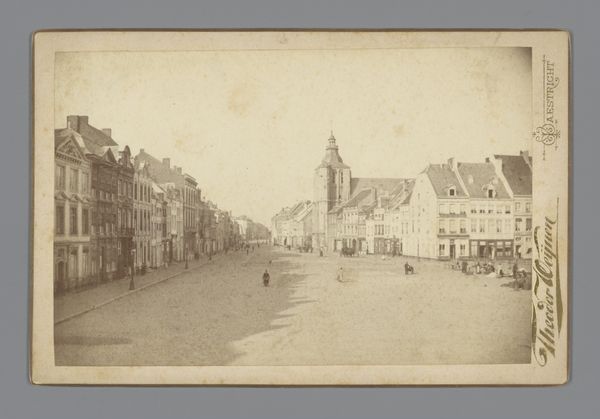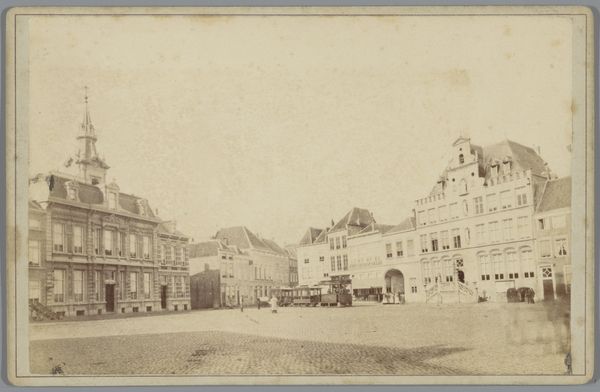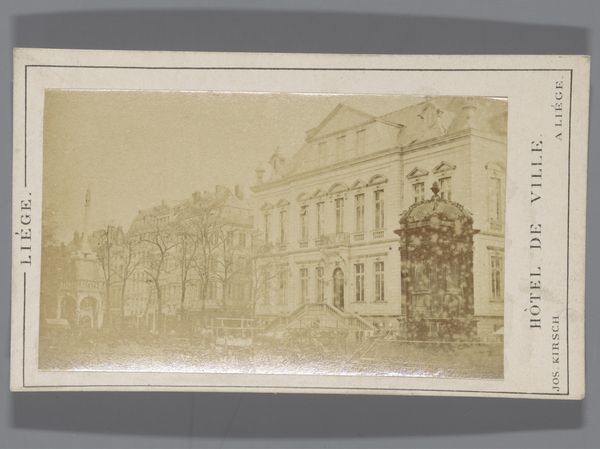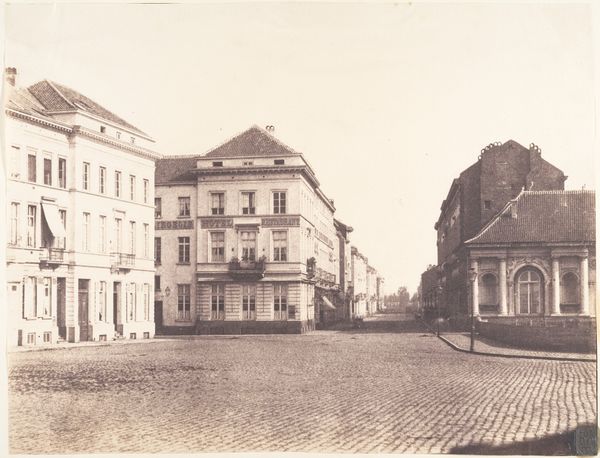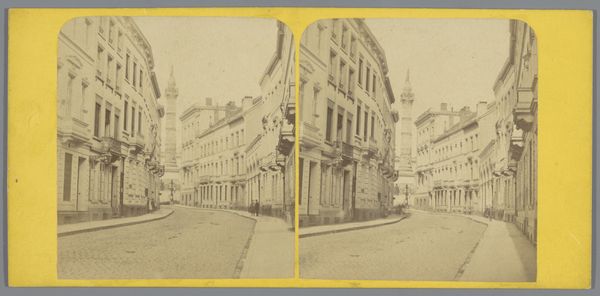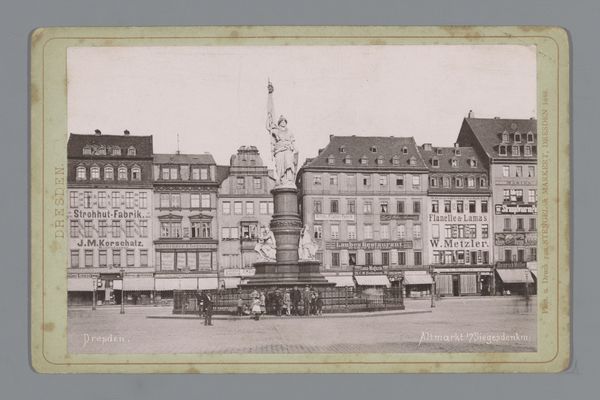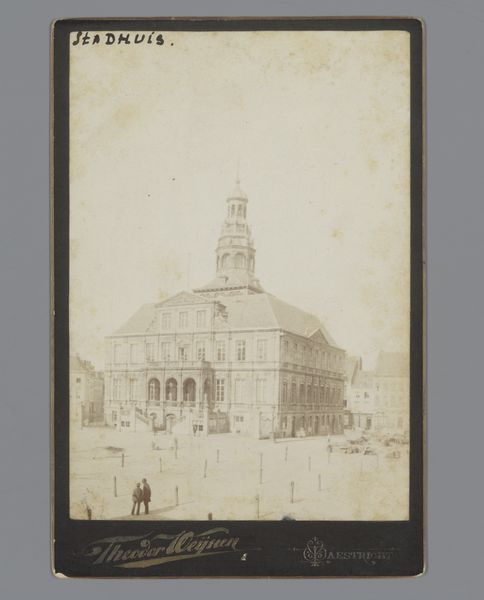
Gezicht op Onze-Lieve-Vrouwekathedraal in Antwerpen, gezien vanaf de rechterkade van de Schelde 1861 - 1870
0:00
0:00
daguerreotype, photography
#
16_19th-century
#
daguerreotype
#
photography
#
cityscape
#
history-painting
#
realism
Dimensions: height 85 mm, width 174 mm
Copyright: Rijks Museum: Open Domain
Editor: So, this is "View of the Cathedral of Our Lady in Antwerp, Seen from the Right Bank of the Scheldt," a daguerreotype photograph from between 1861 and 1870. It strikes me as both incredibly detailed and eerily empty. What do you see in this piece that perhaps I'm missing? Curator: What I find compelling is how the photographer captured a moment of transition. This cathedral isn’t just a building; it's an icon of Antwerp’s identity, a silent witness to centuries of social and religious change. Think about what the cathedral represents – faith, community, artistic achievement. The emptiness you sense – is it a literal emptiness, or does it echo a broader shift in the 19th century, perhaps the rise of secularism or industrialization that's starting to reshape the urban landscape? Editor: That’s fascinating. I hadn’t considered the emptiness as symbolic, but it makes sense. The cityscape almost feels staged, like a theater set. Curator: Exactly! And in a theatre, objects and structures are rife with cultural memory and narrative potential. Consider also the relatively new medium itself. How might the adoption of photography have shifted perceptions of reality versus idealisation? Photography proposed a more accurate rendering, but to what end? Was it being viewed with excitement or uncertainty? The cobblestones may speak to an emerging tension here, between organic textures and a hard-edged, manufactured precision. Editor: I suppose so. And that cathedral in the background is imposing and yet seemingly approachable with its light exposure. Now that I'm thinking about photography and accuracy, I can appreciate the symbolism you were mentioning. Curator: These early photographs weren’t just documents; they were active participants in shaping cultural memory. They created and affirmed perceptions of place. We look at the work and are transported into the worldview of this time and space. What have you found intriguing? Editor: I agree, reflecting on the image has expanded my perception from appreciating the aesthetics to considering social shifts in perspective during that time. Curator: Absolutely. Hopefully, this offers everyone insight into how symbols speak to us over the ages!
Comments
No comments
Be the first to comment and join the conversation on the ultimate creative platform.
